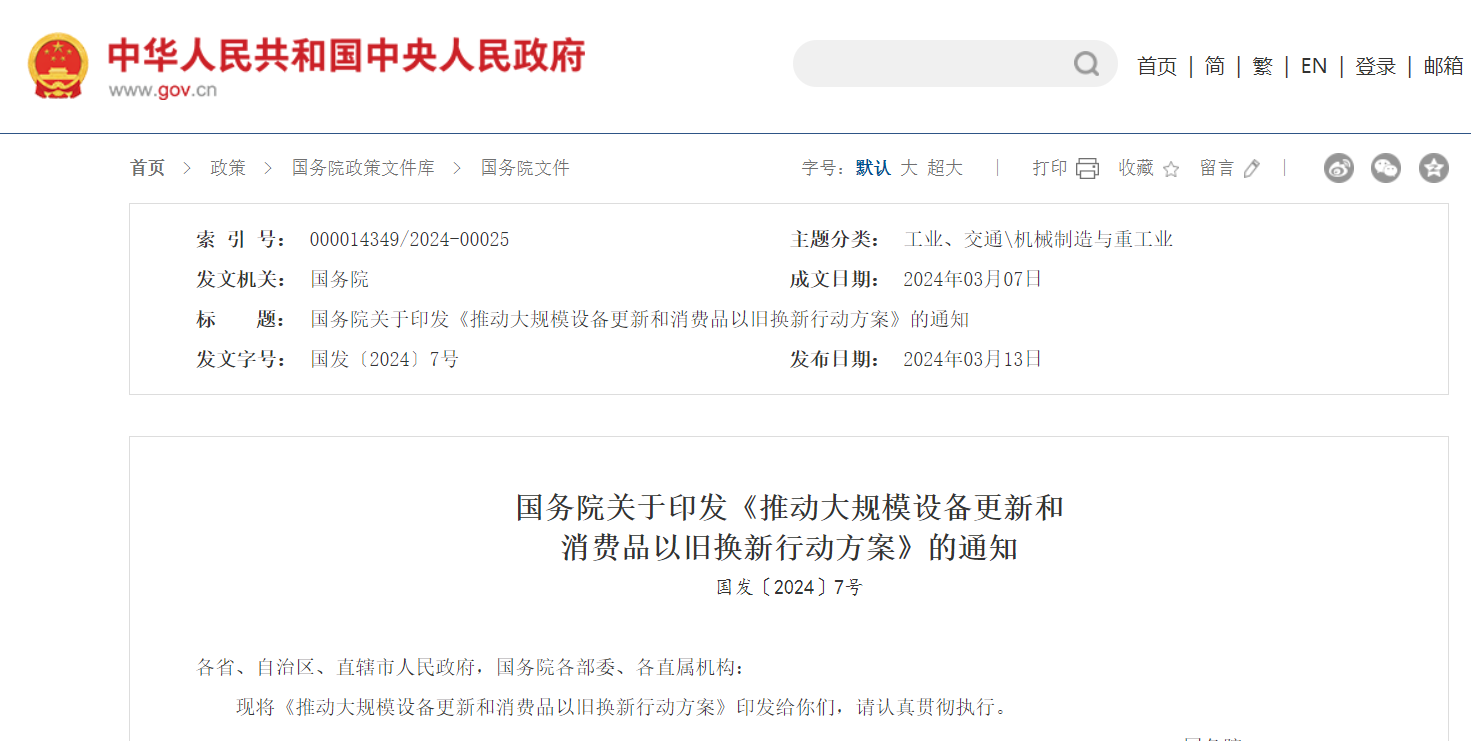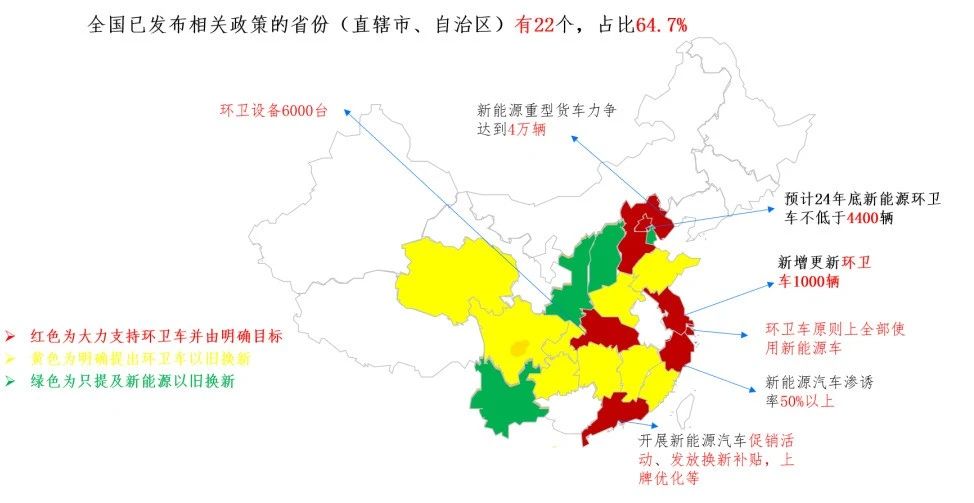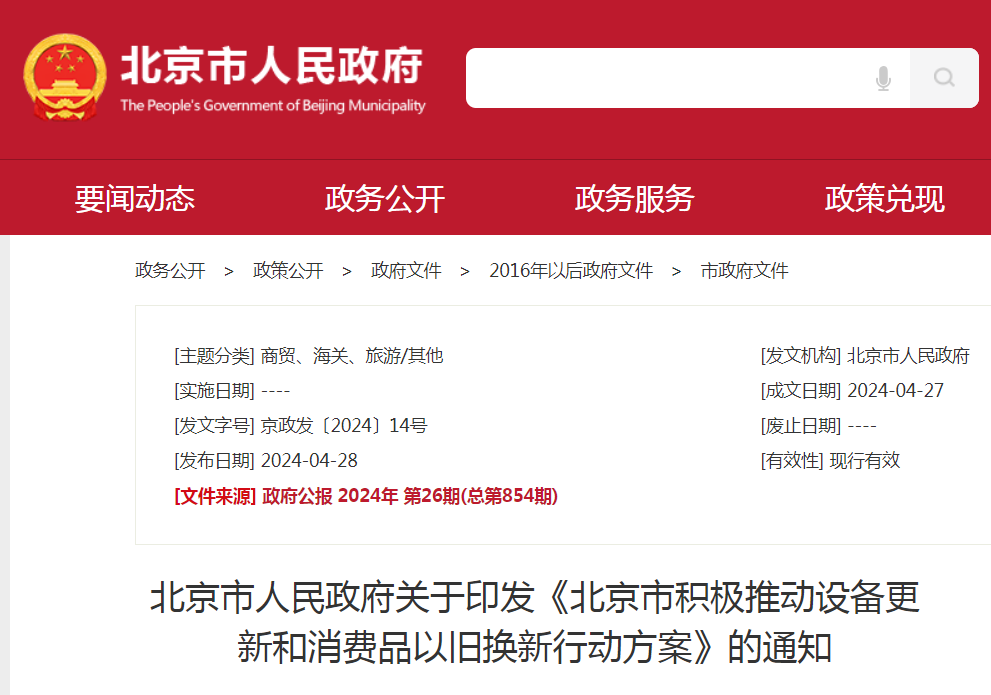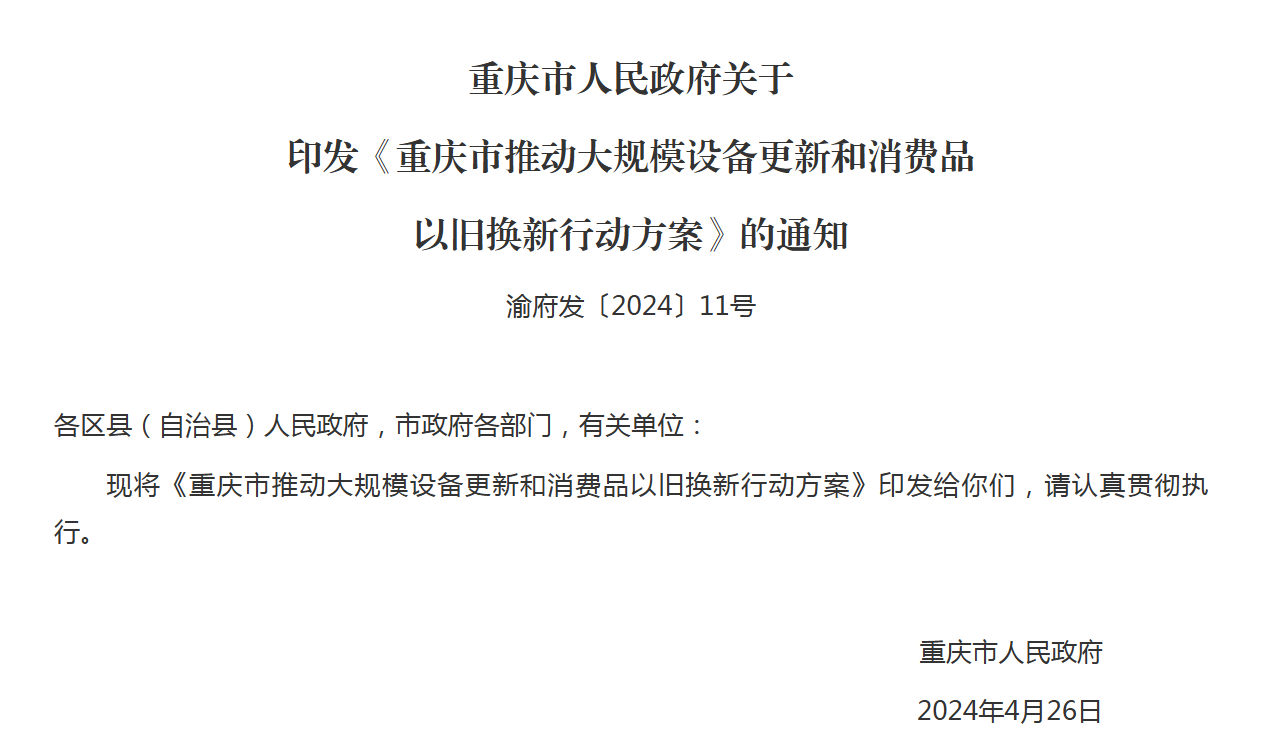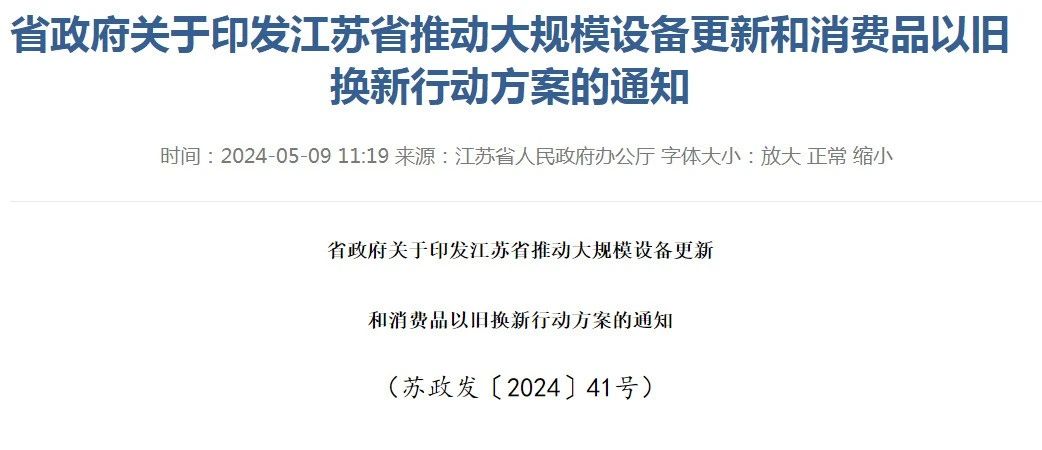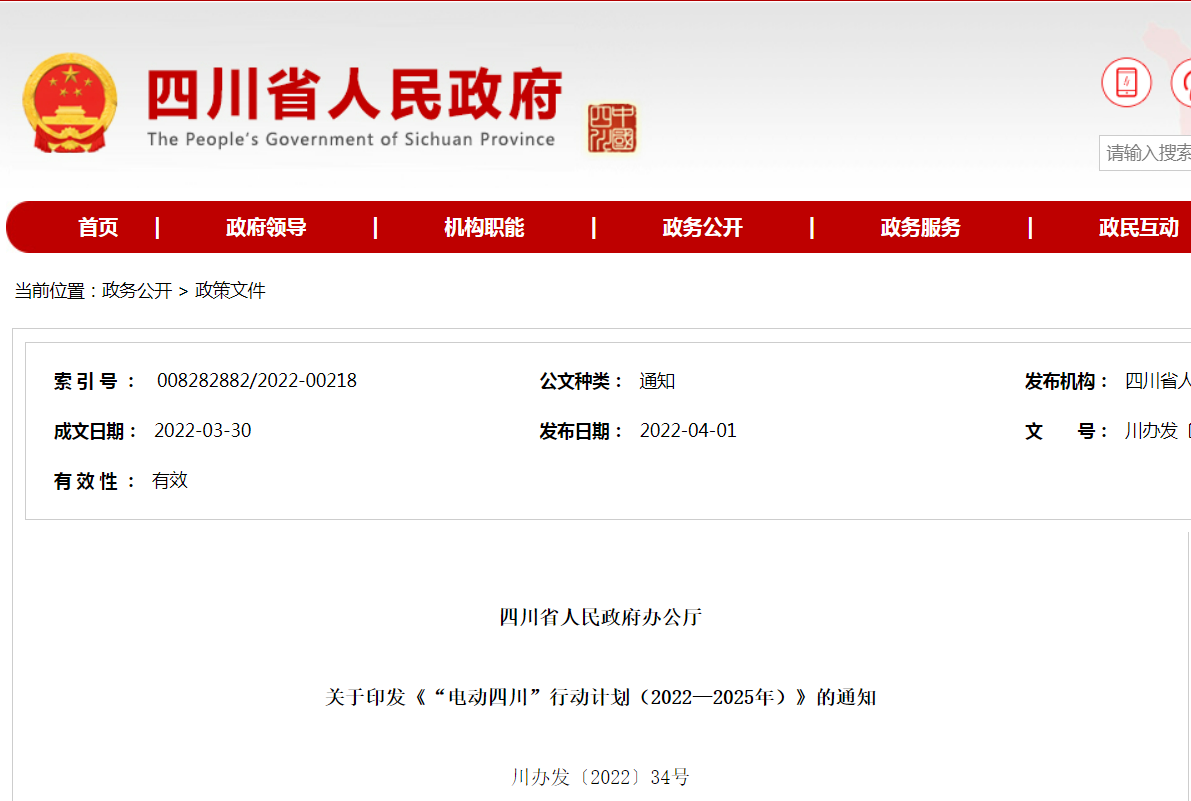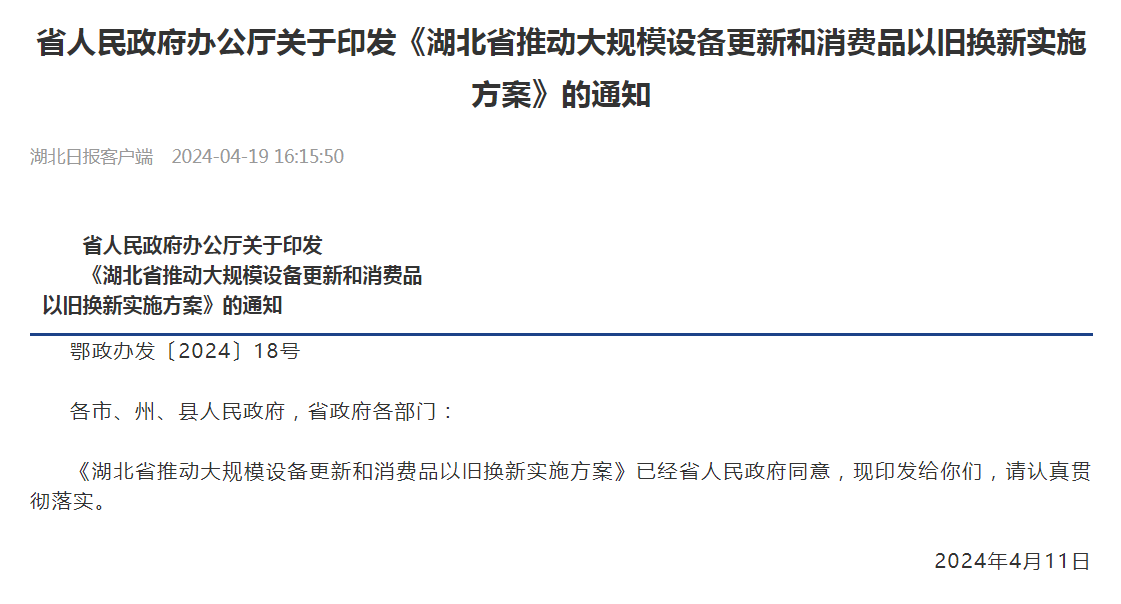In early March 2024, the State Council issued the “Action Plan for Promoting Large-Scale Equipment Updates and the Replacement of Consumer Goods,” which explicitly mentions equipment updates in the construction and municipal infrastructure sectors, with sanitation being one of the key areas.
Several ministries have released detailed implementation guidelines, such as the Ministry of Housing and Urban-Rural Development’s “Implementation Plan for Advancing Equipment Updates in Construction and Municipal Infrastructure,” which specifically includes the update of sanitation facilities and equipment.
Various provinces and cities across the country have subsequently introduced relevant policies, with many mentioning new energy sanitation vehicles.
The Beijing Municipal Government, in its “Action Plan for Actively Promoting Equipment Updates and Consumer Goods Replacement,” states that the city currently has 11,000 sanitation operation vehicles, including road sweeping and cleaning vehicles and domestic waste transport vehicles. Through accelerated updates, it is expected that by the end of 2024, the proportion of new energy vehicles will reach 40%.
Chongqing Municipal Government’s “Action Plan for Promoting Large-Scale Equipment Updates and Consumer Goods Replacement” proposes to accelerate the update of sanitation facilities and equipment. This includes systematically updating old sanitation vehicles and waste incineration facilities. By 2027, the city aims to replace 5,000 sanitation vehicles (or vessels) over five years old and 5,000 waste transfer compactors and compressors with high failure rates and maintenance costs.
Jiangsu Province’s “Action Plan for Promoting Large-Scale Equipment Updates and Consumer Goods Replacement” aims to upgrade over 50 facilities, including waste transfer stations, waste incineration plants, construction waste resource utilization facilities, and leachate treatment systems, and to add or update 1,000 sanitation vehicles.
Sichuan Province’s “Electric Sichuan” Action Plan (2022-2025) supports the use of new energy vehicles in the sanitation sector, targeting a proportion of no less than 50% for new and updated sanitation specialty vehicles by 2025, with the proportion in the “Three Prefectures and One City” region being no less than 30%.
Hubei Province’s “Implementation Plan for Promoting Large-Scale Equipment Updates and Consumer Goods Replacement” aims to update and install a cumulative total of 10,000 elevators, 4,000 water supply facilities, and 6,000 sanitation devices by 2027, upgrade 40 sewage treatment plants, and add 20 million square meters of energy-efficient buildings.
The implementation of these policies is accelerating the replacement of sanitation vehicles. Traditional high-energy-consuming, outdated sanitation vehicles are facing elimination, while new energy sanitation vehicles are becoming the inevitable choice. This also provides an opportunity for automotive companies to strengthen cooperation and communication with other industry players, collectively advancing the transformation, upgrading, and high-quality development of the sanitation vehicle industry.
Post time: Aug-13-2024





